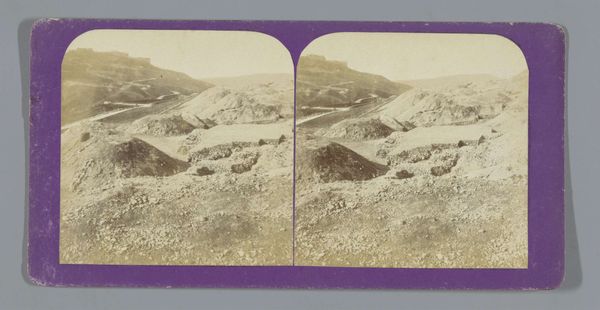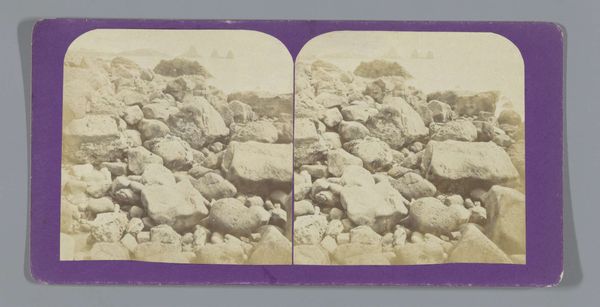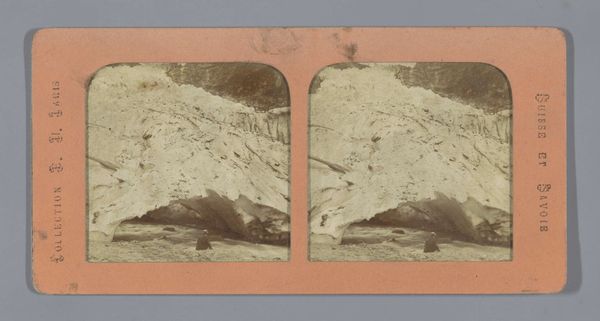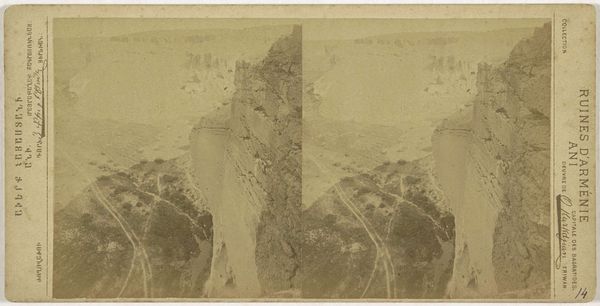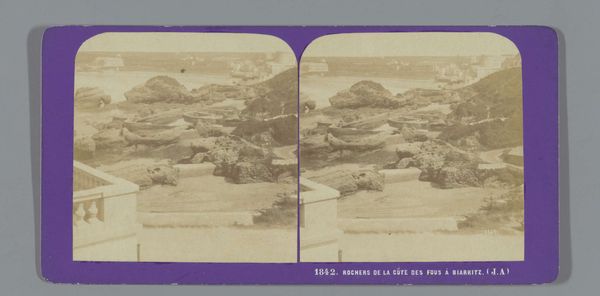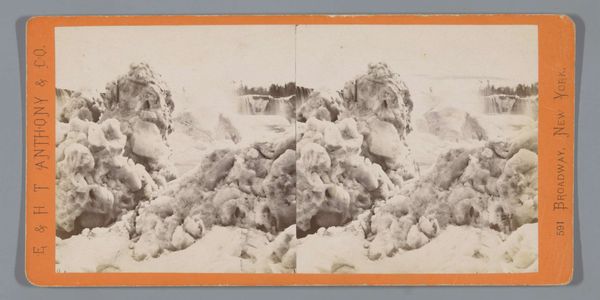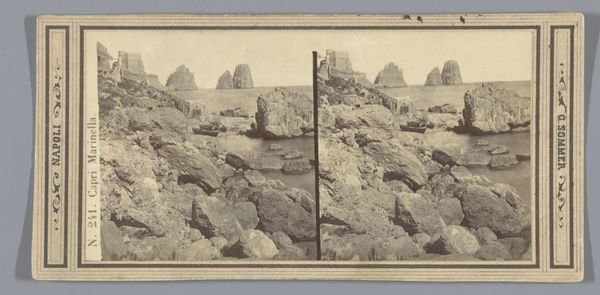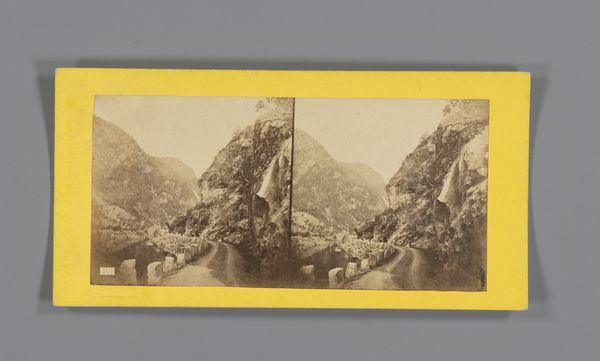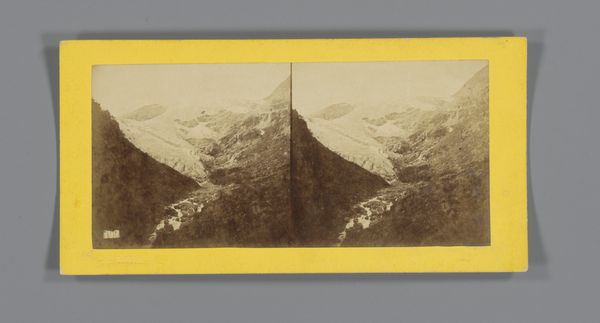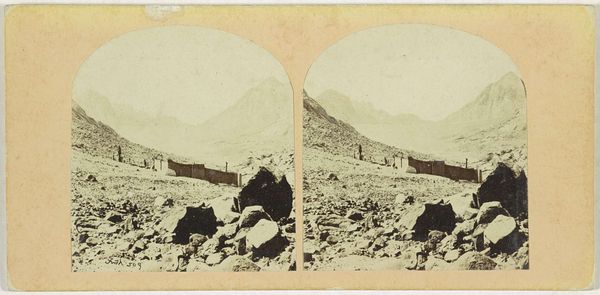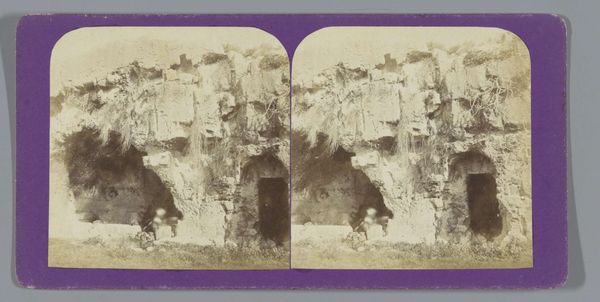
photography, gelatin-silver-print
#
landscape
#
photography
#
coloured pencil
#
gelatin-silver-print
Dimensions: height 88 mm, width 176 mm
Copyright: Rijks Museum: Open Domain
Curator: Here we have Jean Andrieu's "View of the Sulfur Mines of Agrigento," taken between 1862 and 1876. It’s a gelatin silver print, a stereo card really, providing a sense of depth to the scene. Editor: It looks so desolate, almost lunar. That pale, scarred landscape stretching up to meet the sky... there's a somber feeling about it. Curator: Indeed. These mines, a major sulfur extraction site, were essential to the economy, feeding the industrial needs of Europe. The photograph captures not just the landscape, but also a specific moment in Sicily’s history as it was being exploited for its mineral wealth. Editor: Exploitation is the word, absolutely. Look at the way the mines are cut into the hills, almost like wounds. It really highlights the impact of resource extraction on the landscape and, inevitably, on the labor that went into it. I wonder about the miners who worked here; how they lived and what tools and systems were in place. Curator: That's right. Andrieu doesn’t present a picturesque view, but rather a documentary one, typical of many photographers commissioned during this era. It gives us a glimpse into a vital, but often unseen, part of the global economic system, but also a view manufactured and consumed within the colonial apparatus of its time. Editor: The light too. Harsh and unrelenting. It really emphasizes the scale of the operation, the sheer quantity of earth that has been moved and scarred. The image itself becomes a document of that labour; the exposure, the developing…each stage echoing the labour in the sulfur mines themselves. Curator: Certainly. I see this work also as revealing an intersection of industrial progress and human impact. It is both a visual document of Sicily’s sulfur mines, and also of its societal consequences in a growing European market. Editor: I am still left to think about all the labor and skill gone into both sides of the making. This process reveals its impact long past its original moment. Curator: That's an important point that brings into question both what the image captures and the labor behind creating it. Thank you for this material assessment. Editor: And thank you, for illuminating the cultural dynamics present in this complex document.
Comments
No comments
Be the first to comment and join the conversation on the ultimate creative platform.
